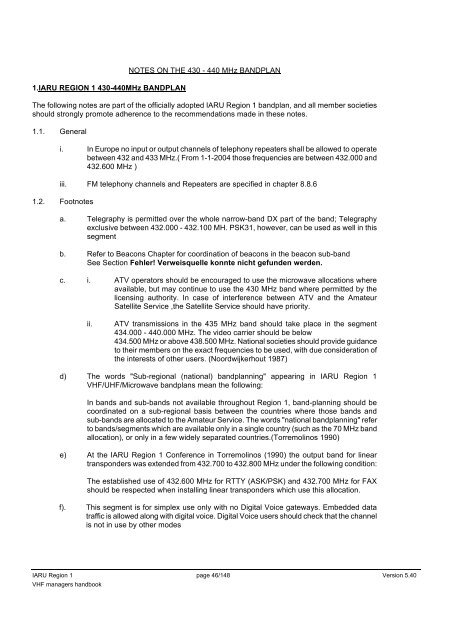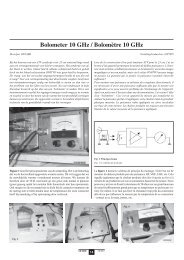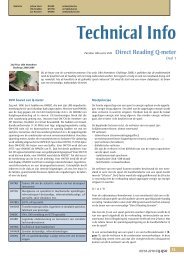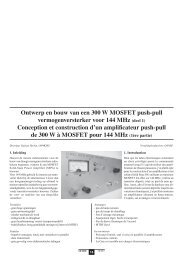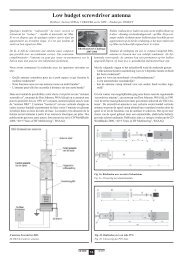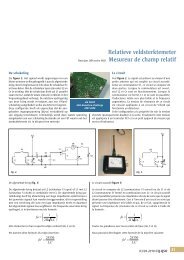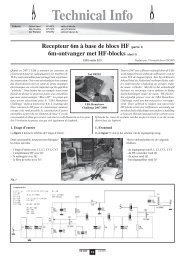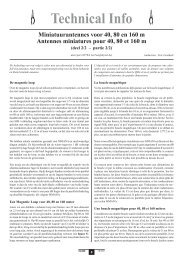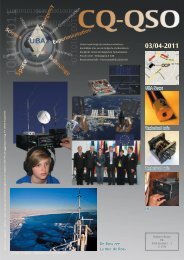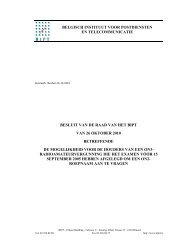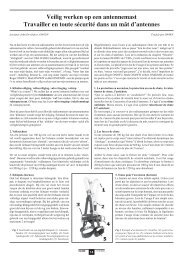IARU Region 1 VHF Managers Handbook - UBA
IARU Region 1 VHF Managers Handbook - UBA
IARU Region 1 VHF Managers Handbook - UBA
You also want an ePaper? Increase the reach of your titles
YUMPU automatically turns print PDFs into web optimized ePapers that Google loves.
1.<strong>IARU</strong> REGION 1 430-440MHz BANDPLAN<br />
<strong>IARU</strong> <strong>Region</strong> 1 page 46/148 Version 5.40<br />
<strong>VHF</strong> managers handbook<br />
NOTES ON THE 430 - 440 MHz BANDPLAN<br />
The following notes are part of the officially adopted <strong>IARU</strong> <strong>Region</strong> 1 bandplan, and all member societies<br />
should strongly promote adherence to the recommendations made in these notes.<br />
1.1. General<br />
i. In Europe no input or output channels of telephony repeaters shall be allowed to operate<br />
between 432 and 433 MHz.( From 1-1-2004 those frequencies are between 432.000 and<br />
432.600 MHz )<br />
iii. FM telephony channels and Repeaters are specified in chapter 8.8.6<br />
1.2. Footnotes<br />
a. Telegraphy is permitted over the whole narrow-band DX part of the band; Telegraphy<br />
exclusive between 432.000 - 432.100 MH. PSK31, however, can be used as well in this<br />
segment<br />
b. Refer to Beacons Chapter for coordination of beacons in the beacon sub-band<br />
See Section Fehler! Verweisquelle konnte nicht gefunden werden.<br />
c. i. ATV operators should be encouraged to use the microwave allocations where<br />
available, but may continue to use the 430 MHz band where permitted by the<br />
licensing authority. In case of interference between ATV and the Amateur<br />
Satellite Service ,the Satellite Service should have priority.<br />
ii. ATV transmissions in the 435 MHz band should take place in the segment<br />
434.000 - 440.000 MHz. The video carrier should be below<br />
434.500 MHz or above 438.500 MHz. National societies should provide guidance<br />
to their members on the exact frequencies to be used, with due consideration of<br />
the interests of other users. (Noordwijkerhout 1987)<br />
d) The words "Sub-regional (national) bandplanning" appearing in <strong>IARU</strong> <strong>Region</strong> 1<br />
<strong>VHF</strong>/UHF/Microwave bandplans mean the following:<br />
In bands and sub-bands not available throughout <strong>Region</strong> 1, band-planning should be<br />
coordinated on a sub-regional basis between the countries where those bands and<br />
sub-bands are allocated to the Amateur Service. The words "national bandplanning" refer<br />
to bands/segments which are available only in a single country (such as the 70 MHz band<br />
allocation), or only in a few widely separated countries.(Torremolinos 1990)<br />
e) At the <strong>IARU</strong> <strong>Region</strong> 1 Conference in Torremolinos (1990) the output band for linear<br />
transponders was extended from 432.700 to 432.800 MHz under the following condition:<br />
The established use of 432.600 MHz for RTTY (ASK/PSK) and 432.700 MHz for FAX<br />
should be respected when installing linear transponders which use this allocation.<br />
f). This segment is for simplex use only with no Digital Voice gateways. Embedded data<br />
traffic is allowed along with digital voice. Digital Voice users should check that the channel<br />
is not in use by other modes


